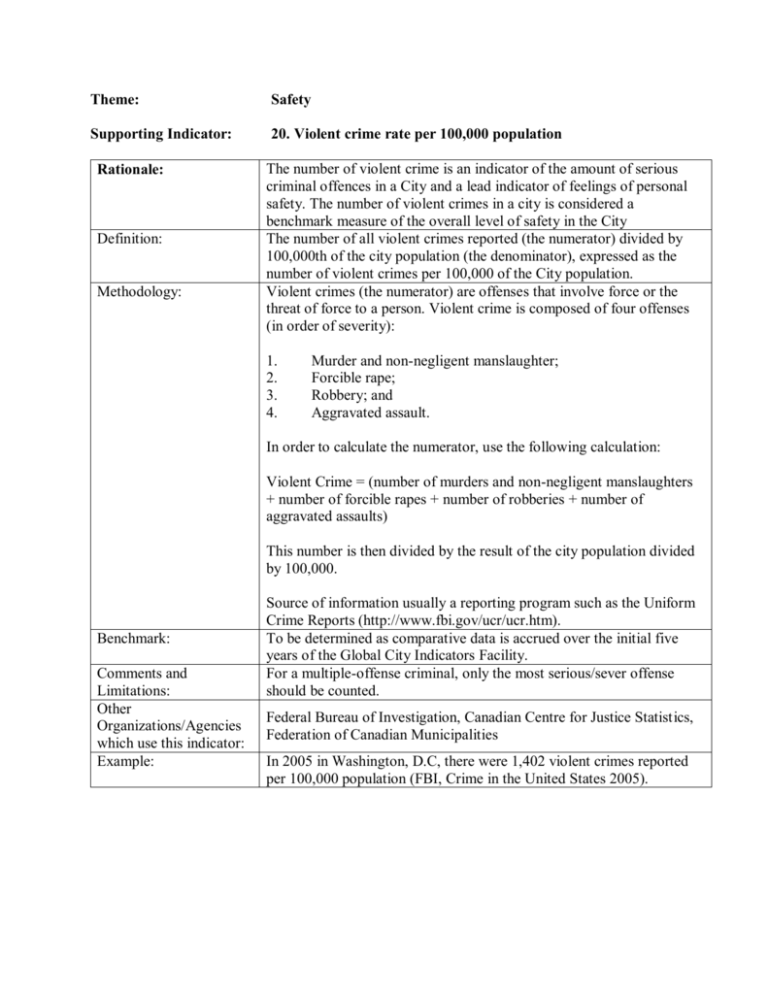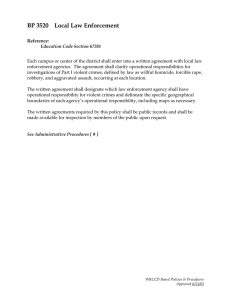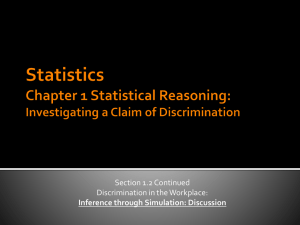Theme: Safety Supporting Indicator: 20. Violent crime rate per
advertisement

Theme: Safety Supporting Indicator: 20. Violent crime rate per 100,000 population Rationale: Definition: Methodology: The number of violent crime is an indicator of the amount of serious criminal offences in a City and a lead indicator of feelings of personal safety. The number of violent crimes in a city is considered a benchmark measure of the overall level of safety in the City The number of all violent crimes reported (the numerator) divided by 100,000th of the city population (the denominator), expressed as the number of violent crimes per 100,000 of the City population. Violent crimes (the numerator) are offenses that involve force or the threat of force to a person. Violent crime is composed of four offenses (in order of severity): 1. 2. 3. 4. Murder and non-negligent manslaughter; Forcible rape; Robbery; and Aggravated assault. In order to calculate the numerator, use the following calculation: Violent Crime = (number of murders and non-negligent manslaughters + number of forcible rapes + number of robberies + number of aggravated assaults) This number is then divided by the result of the city population divided by 100,000. Benchmark: Comments and Limitations: Other Organizations/Agencies which use this indicator: Example: Source of information usually a reporting program such as the Uniform Crime Reports (http://www.fbi.gov/ucr/ucr.htm). To be determined as comparative data is accrued over the initial five years of the Global City Indicators Facility. For a multiple-offense criminal, only the most serious/sever offense should be counted. Federal Bureau of Investigation, Canadian Centre for Justice Statistics, Federation of Canadian Municipalities In 2005 in Washington, D.C, there were 1,402 violent crimes reported per 100,000 population (FBI, Crime in the United States 2005).











